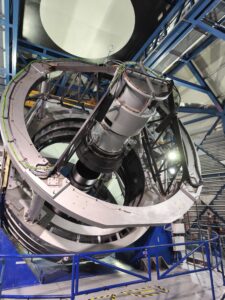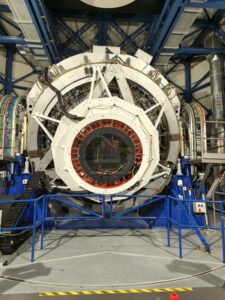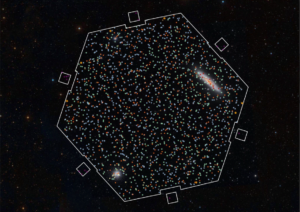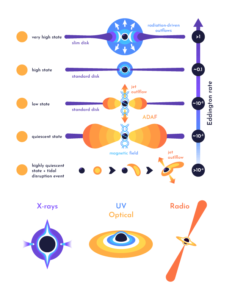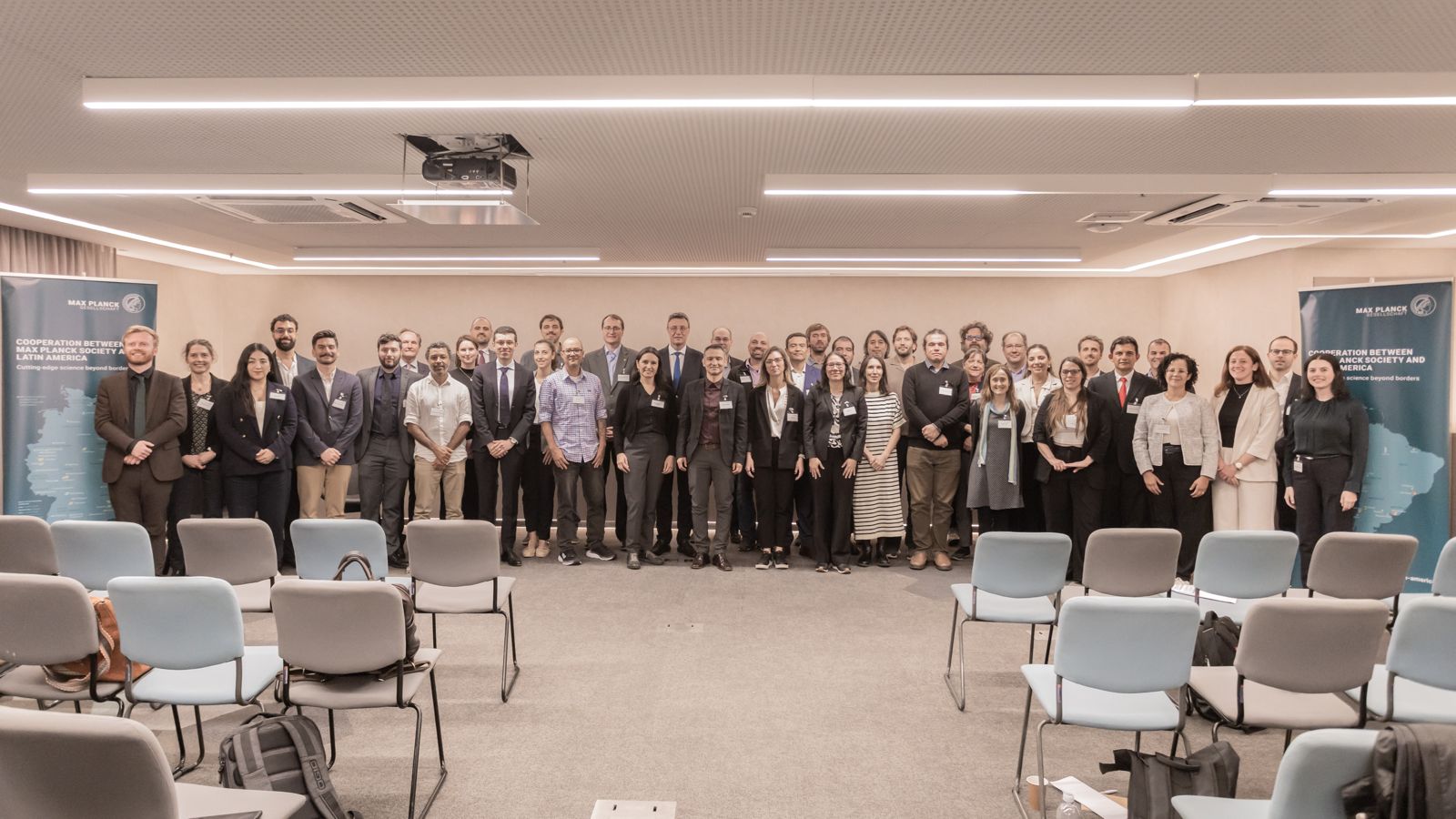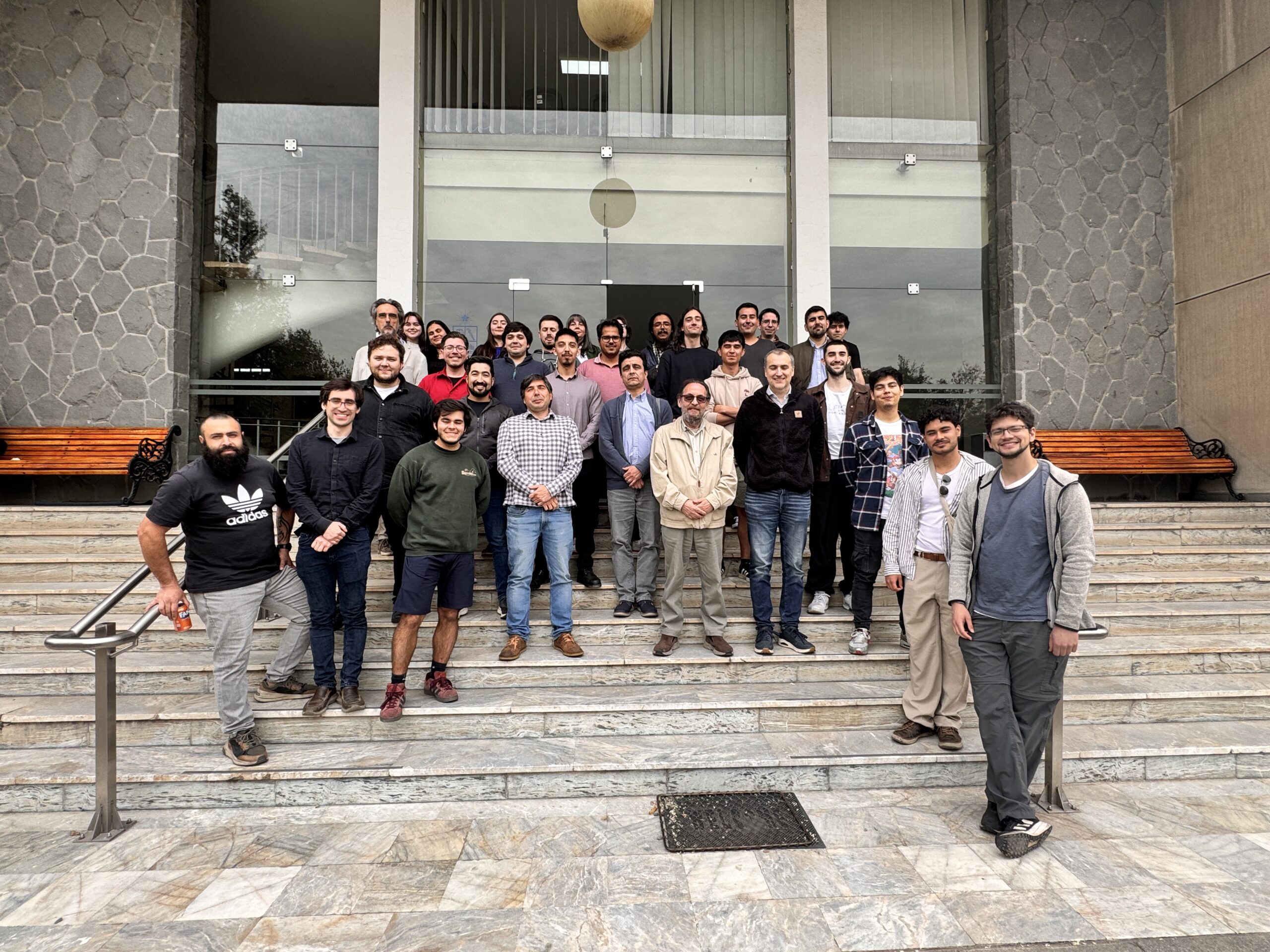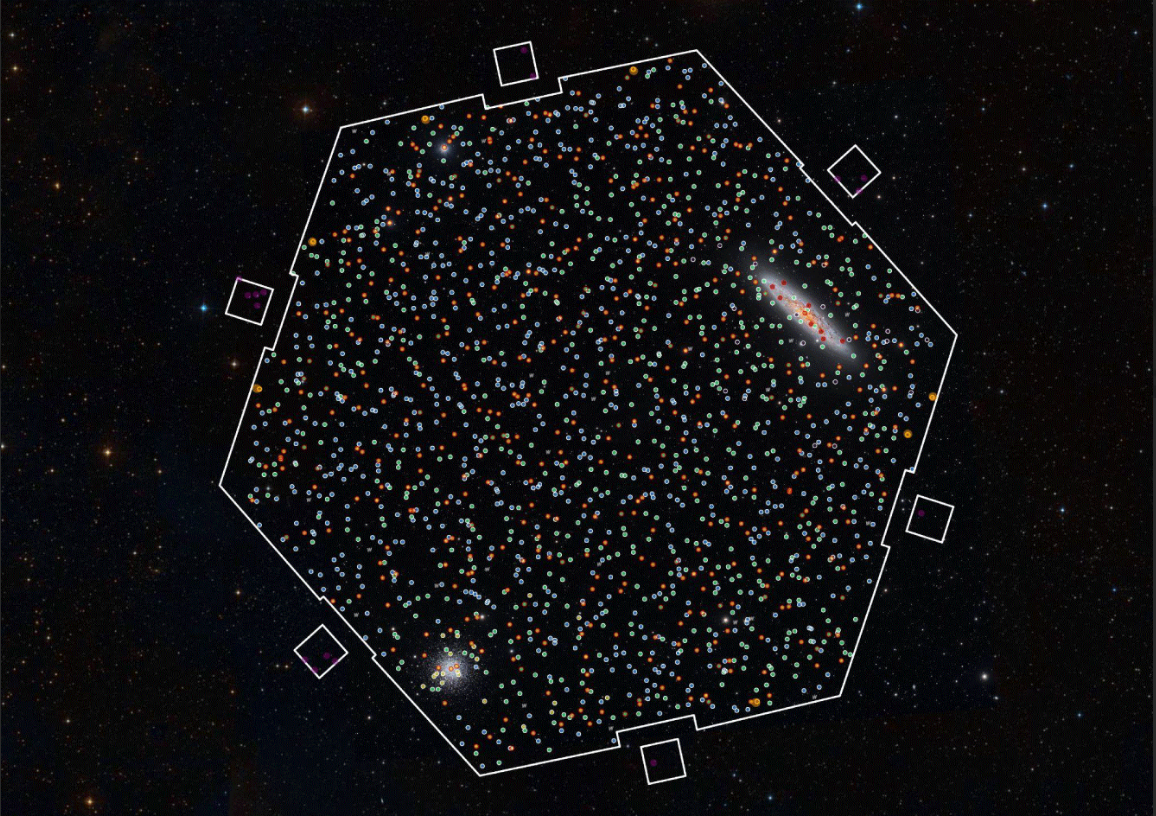
Chile celebrates the first light of 4MOST: two major projects involving CATA astronomers begin to explore the Universe
The 4MOST instrument, installed on ESO's VISTA telescope at Paranal, has made its first astronomical observations. Its program includes the CHANGES and CHANCES projects, both involving researchers from the Center for Astrophysics and Associated Technologies (CATA).
The 4MOST (4-meter Multi-Object Spectroscopic Telescope) instrument, installed on the VISTA telescope at the European Southern Observatory (ESO)’s Paranal Observatory, achieved first light, marking the beginning of a new era for astronomy. This milestone, the result of more than a decade of international development, once again consolidates Chile as the epicenter of global astronomy.
Designed to observe up to 2,400 objects simultaneously, 4MOST breaks down the light from stars and galaxies into thousands of colors, revealing their chemical composition, temperature, velocity, and age. With more than 2,400 optical fibers the thickness of a human hair, it is currently the largest multi-object spectroscopic survey in the southern hemisphere.
In this first stage, 4MOST will carry out 25 scientific programs, including two surveys: CHANCES and CHANGES, both with the participation of astronomers from the Center for Astrophysics and Associated Technologies (CATA, ANID Basal Center).
CHANCES: unraveling how galaxies evolve in extreme environments
The CHileAN Cluster galaxy Evolution Survey (CHANCES) seeks to understand how dense environments, such as galaxy clusters and superclusters, transform the structure and evolution of galaxies. Through spectroscopic observations of more than 300,000 galaxies, the team will be able to trace how the environment affects their morphology, composition, and ability to form stars.
“This first light from 4MOST marks a milestone for a state-of-the-art instrument involving hundreds of astronomers and engineers around the world. Personally, I am very excited to see the first spectra after working for almost five years on the preparation of our CHANCES project. We will soon begin collecting data, and there will undoubtedly be many scientific discoveries,” said Yara Jaffé, Associate Researcher at CATA, Alternate Director of MINGAL, and professor at the Federico Santa María Technical University.
“CHANCES will obtain the spectra of approximately 300,000 galaxies, allowing us to understand how dense structures transform galaxies, modifying their morphology or even promoting bursts of star formation,” added Hugo Méndez Hernández, a researcher affiliated with CATA and a postdoctoral fellow at the University of La Serena, who participated in the first light of 4MOST at Paranal and the first tests of the instrument.
Antonela Monachesi, Principal Investigator at CATA and professor at the University of La Serena, emphasized that “4MOST is a unique instrument in the southern hemisphere due to its enormous field of view and ability to observe thousands of objects simultaneously. The CHANCES observations, which will continue for five years, will enable us to answer key questions about how galaxies evolve in dense environments and how the most massive structures in the Universe grow.”
The CHANCES survey also involves researchers from CATA: Cristóbal Sifón (Pontificia Universidad Católica de Valparaíso); Ricardo Demarco (Universidad Andrés Bello), Ciria Lima-Dias and Simón Véliz (both from Universidad de La Serena) and Franco Piraino, as well as Raúl Baier Soto (both from U. Técnica Federico Santa María).
CHANGES: mapping black holes
The Chilean Active Galactic Nuclei and Galaxy Evolution Survey (CHANGES), led by Franz Bauer, Associate Researcher at CATA, academic at the University of Tarapacá, and one of the principal investigators of the survey alongside Paulina Lira, accounts for approximately 7.5% of 4MOST’s total observation time.
Using this new ESO instrument, in combination with the Large Synoptic Survey Telescope (LSST) at the Vera C. Rubin Observatory, the project will obtain spectra and light curves from more than one million AGNs (Active Galactic Nuclei) and their host galaxies.
In the words of Franz Bauer, CATA researcher and survey leader, “the CHANGES project will explore how supermassive black holes grow and how they influence the evolution of their host galaxies, observing hundreds of thousands of active nuclei in the southern hemisphere sky with 4MOST. By combining these observations with LSST data, the project will allow us to study the variability, environment, and history of these objects over cosmic time. In addition, CHANGES will identify rare and extreme phenomena, such as stellar disruption events and quasars in the early Universe, offering a new window into the growth of black holes since the origins of the cosmos,” he explained.
The CATA team participating in CHANGES includes the Center’s principal investigators: Roberto Assef (Universidad Diego Portales), Ezequiel Treister (Universidad de Tarapacá), and Felipe Barrientos (Pontificia Universidad Católica); Associate Researchers Chiara Mazzucchelli (Universidad Diego Portales) and Timo Anguita (Universidad Andrés Bello), and Ignacio del Moral (PUC postdoctoral fellow), who participated in the installation and commissioning of the instrument at Paranal.
CATA’s rol in 4MOST
Although CATA did not participate directly in the construction of the instrument, its scientific and technical contribution has been key in planning surveys, designing observation strategies, and forming scientific commissions.
In this way, CATA consolidates its position as a leading player in major international collaborations, strengthening Chile’s position at the forefront of global astronomy.
About 4MOST
The 4MOST project is led by the Leibniz-Institut für Astrophysik Potsdam (AIP) and brings together 30 scientific institutions from Europe, Australia, and Chile. Its scientific operations are carried out from ESO’s Paranal Observatory, under one of the clearest skies on the planet.
Recent news
-
 Publicado el: 05/12/2025CATA launches Applied Research Fund 2026
Publicado el: 05/12/2025CATA launches Applied Research Fund 2026 -
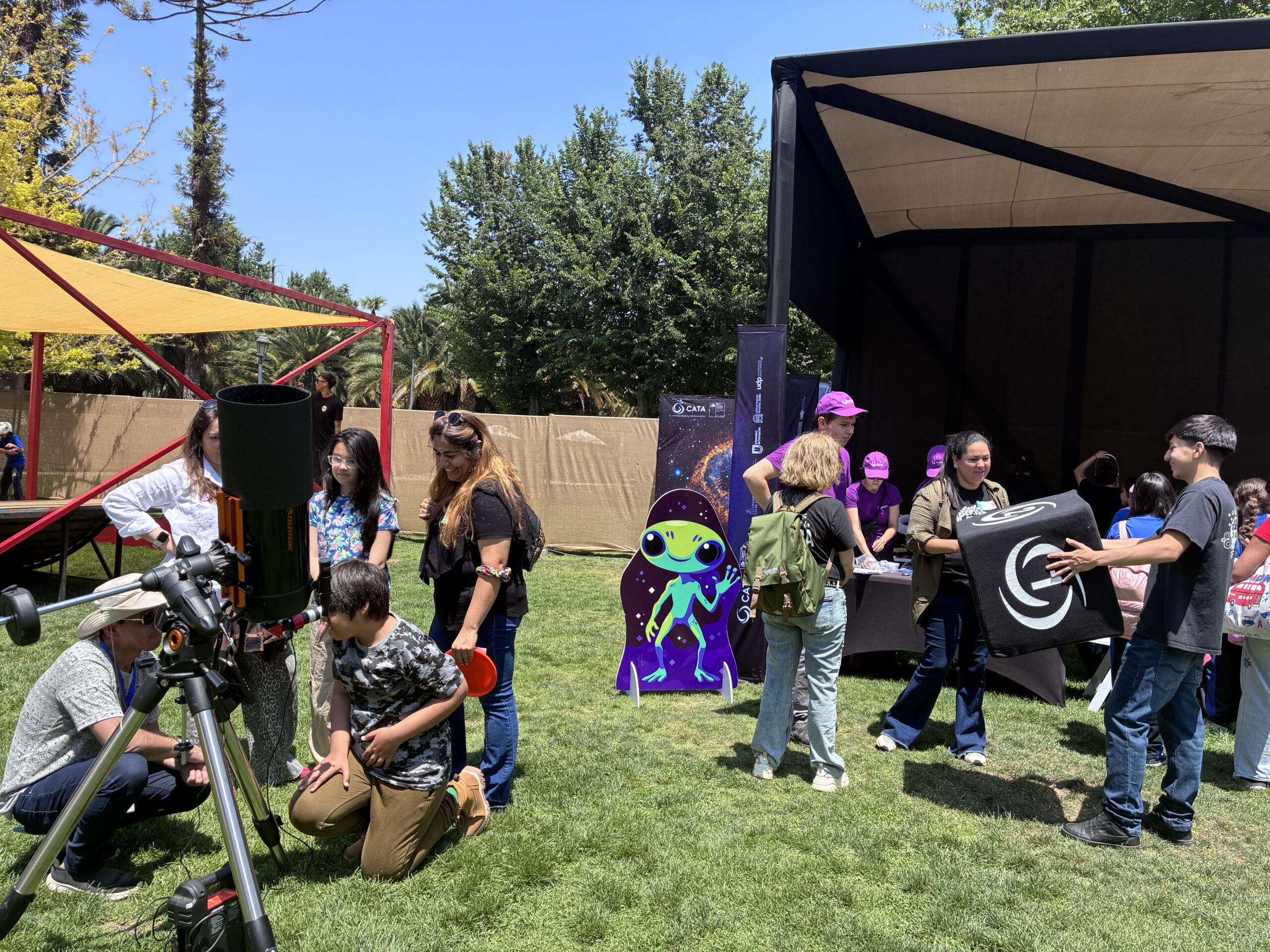 Publicado el: 01/12/2025The astronomical experience was part of the 4th Ladera Sur Festival.
Publicado el: 01/12/2025The astronomical experience was part of the 4th Ladera Sur Festival. -
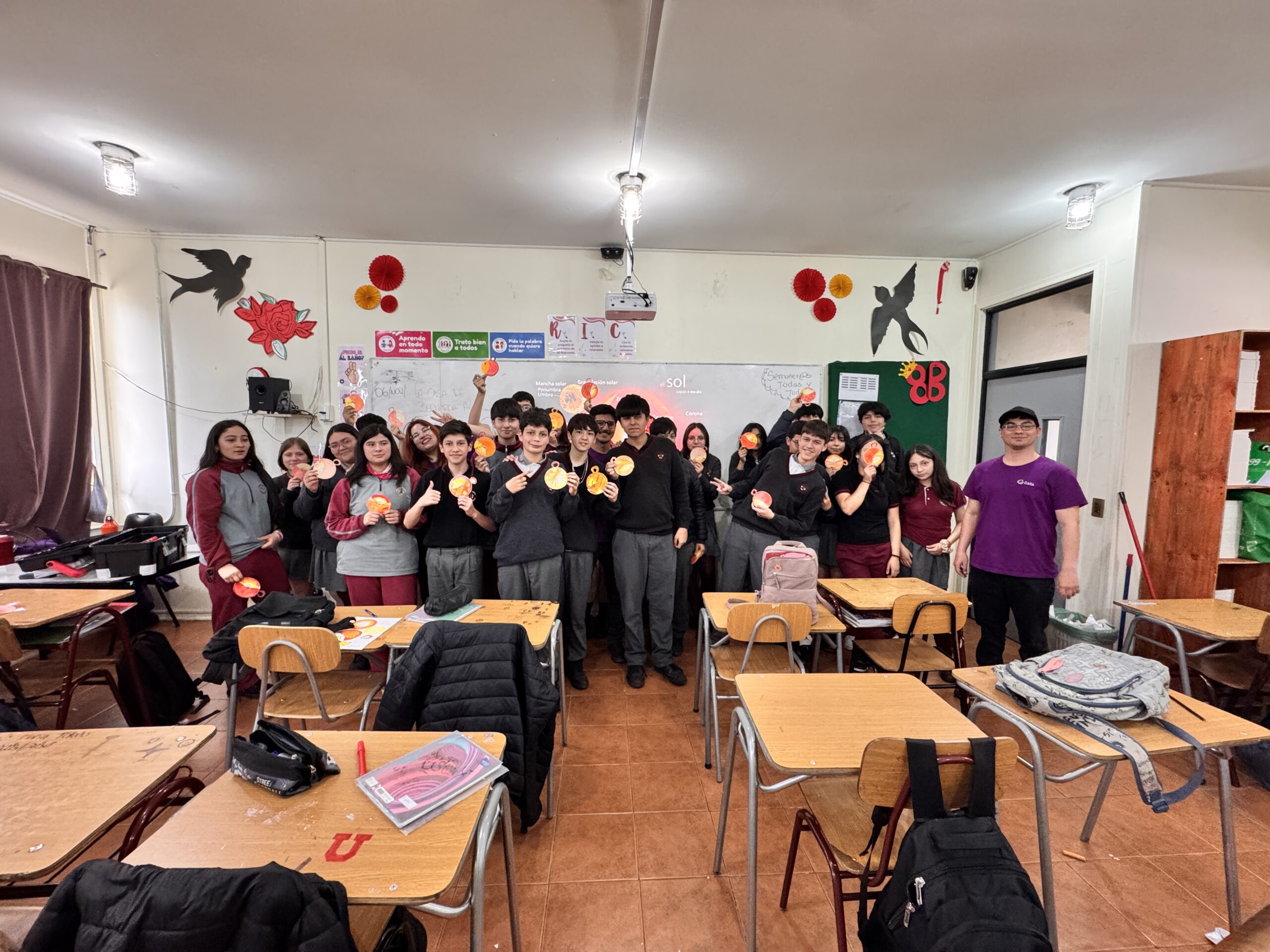 Publicado el: 25/11/2025Students from Angol held an astronomy workshop with CATA
Publicado el: 25/11/2025Students from Angol held an astronomy workshop with CATA -
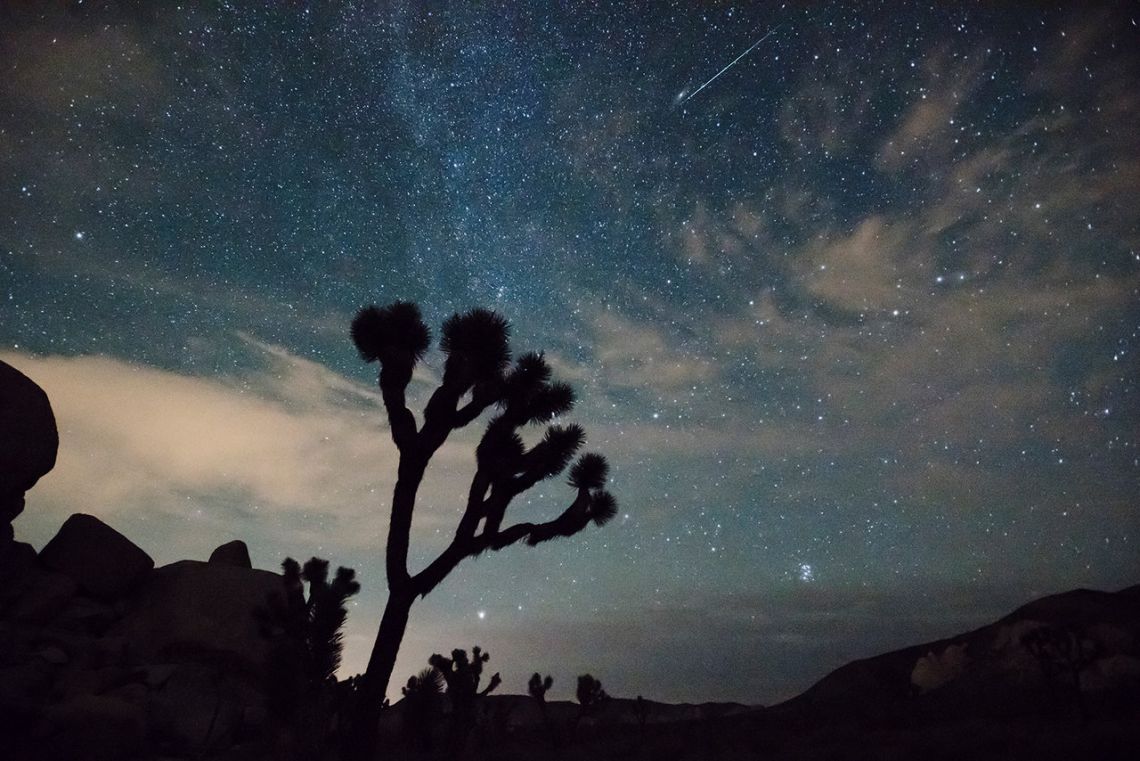 Publicado el: 15/11/2025Leonids meteor shower 2025: What are they, when will they be visible from Chile, and what can we learn from them?
Publicado el: 15/11/2025Leonids meteor shower 2025: What are they, when will they be visible from Chile, and what can we learn from them? -
 Publicado el: 13/11/2025CATA researcher strengthens international ties during visit to the Center for Astrobiology in Madrid
Publicado el: 13/11/2025CATA researcher strengthens international ties during visit to the Center for Astrobiology in Madrid
Categories list
- Acknowledgments 21
- Astrobiology 6
- AstroCluster 1
- Black holes 18
- Corporativo 57
- Cosmology 5
- Descubrimientos 22
- Disclosure 73
- Exoplanets 13
- Extension 6
- Galaxies 21
- Galaxies formation 5
- Inter y Transdisciplina 4
- Local Universe 16
- Publications 6
- Sin categorizar 34
- Solar System 21
- Stellar formation 8
- Technology 15
- Technology Transfer 17
